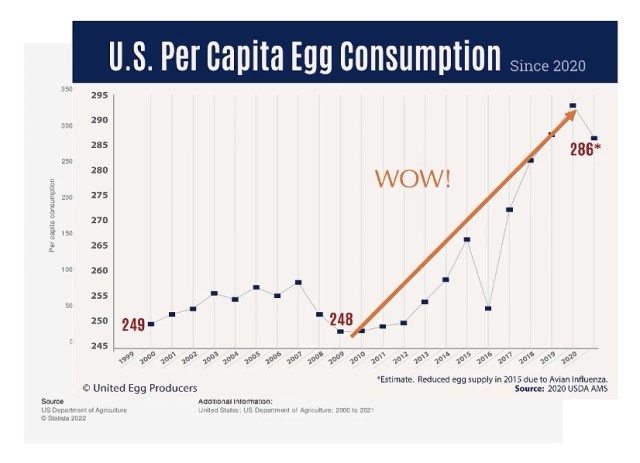Analyzing The Economic Effects Of Trump's Tariffs On California

Table of Contents
Impact on California's Agricultural Sector
California's agricultural sector, a cornerstone of the state's economy, bore the brunt of Trump's tariffs. The impact of Trump's tariffs on California agriculture was profound, triggering a ripple effect that reverberated throughout the supply chain.
Increased Costs for Farmers and Exporters
The tariffs significantly increased the cost of exporting California agricultural products. Products like almonds, wine, and fruits faced higher import duties in key markets, making them less competitive compared to goods from other countries. This resulted in:
- Reduced export volume: Farmers experienced a decline in sales to international markets, leading to reduced revenues.
- Increased domestic prices: With less product exported, the supply domestically decreased, leading to higher prices for consumers.
- Loss of market share: Competitors from countries not subject to the same tariffs gained a significant advantage, capturing market share previously held by California producers. For example, the tariffs on almonds led to a notable drop in exports to China, a major market for California almond growers. Similarly, the wine industry faced challenges in exporting to the European Union, a key market for California wines.
Retaliatory Tariffs from Trading Partners
In response to Trump's tariffs, several countries imposed retaliatory tariffs on California goods. These retaliatory measures further exacerbated the challenges faced by the state's agricultural sector. For instance:
- Reduced demand for California goods abroad: Countries targeted California agricultural products with retaliatory tariffs, leading to a decrease in demand for goods like dairy products and fresh produce.
- Negative impact on specific export sectors: Specific agricultural sectors, such as fruit and nut producers, faced disproportionately negative impacts as their products were directly targeted by these retaliatory tariffs.
Effects on California's Manufacturing Sector
California's diverse manufacturing sector also experienced significant consequences stemming from Trump's tariffs on California. The increased costs and disrupted supply chains had a lasting impact.
Increased Input Costs
Tariffs on imported raw materials and intermediate goods substantially increased production costs for California manufacturers. This directly impacted:
- Higher manufacturing costs: The increased cost of inputs made California-manufactured goods less price-competitive both domestically and internationally.
- Reduced profitability: Many manufacturers saw their profit margins squeezed, forcing some to reduce production or lay off workers.
- Job losses (if applicable): In some sectors, the increased costs led to job losses as companies struggled to remain profitable.
Impact on Supply Chains
Trump's tariffs on California created significant disruptions to established supply chains. This resulted in:
- Supply chain disruptions: Delays in receiving raw materials and components led to production slowdowns and increased costs.
- Increased lead times: Manufacturers faced longer lead times for essential inputs, hindering their ability to meet demand.
- Higher transportation costs: Companies had to explore alternative sourcing options, increasing transportation costs and further impacting profitability. The technology and aerospace sectors, heavily reliant on global supply chains, felt the impact particularly strongly.
The Role of Trade Wars and Economic Uncertainty
The trade wars and tariff uncertainty created by the implementation of Trump's tariffs on California led to a climate of economic instability and uncertainty.
Investor Confidence and Investment
The trade tensions significantly dampened investor confidence, leading to:
- Reduced investment: Businesses were hesitant to invest in expansion or new projects due to the unpredictable trade environment.
- Slower economic growth: The reduced investment negatively impacted job creation and overall economic growth in California.
- Uncertainty in the business environment: The fluctuating trade policies made it challenging for businesses to plan for the future, hindering long-term growth strategies.
Consumer Prices and Inflation
Trump's tariffs on California had a direct impact on consumer prices and inflation within the state:
- Increased prices for goods and services: Tariffs increased the price of imported goods, leading to higher prices for consumers.
- Reduced consumer purchasing power: Higher prices eroded consumer purchasing power, particularly impacting lower-income households who spend a larger proportion of their income on essential goods.
- Inflationary pressure: The increased prices contributed to inflationary pressure throughout the California economy.
Political and Social Ramifications
The economic fallout from Trump's tariffs on California sparked significant political and social consequences. The agricultural sector, a powerful political force in the state, voiced strong opposition to the tariffs, lobbying for relief and alternative trade policies. The economic hardship caused by the tariffs disproportionately affected certain demographics, sparking social unrest and highlighting existing economic inequalities. These events fostered further political polarization and fueled debates about the role of trade in the California economy.
Conclusion: A Comprehensive Look at Trump's Tariffs on California
This analysis has revealed the significant and multifaceted economic effects of Trump's tariffs on California. The agricultural sector suffered from reduced exports, increased costs, and retaliatory tariffs. The manufacturing sector faced increased input costs, supply chain disruptions, and reduced profitability. Furthermore, the trade wars fostered uncertainty, dampening investor confidence and contributing to inflation. Understanding the complex economic effects of Trump's tariffs on California remains crucial for shaping future trade policies. Further research is needed to fully understand the lasting impact and inform strategies to mitigate similar risks in the future. Continue the conversation about the impact of Trump's tariffs on California's economy.

Featured Posts
-
 Rays Dominate Padres In Clean Sweep Real Radio 104 1s Coverage
May 16, 2025
Rays Dominate Padres In Clean Sweep Real Radio 104 1s Coverage
May 16, 2025 -
 Androids Design Evolution A Deep Dive
May 16, 2025
Androids Design Evolution A Deep Dive
May 16, 2025 -
 Dwyane Wade Weighs In Jimmy Butlers Departure From The Miami Heat
May 16, 2025
Dwyane Wade Weighs In Jimmy Butlers Departure From The Miami Heat
May 16, 2025 -
 Significant Drop In Us Egg Prices Dozens Now Available For 5
May 16, 2025
Significant Drop In Us Egg Prices Dozens Now Available For 5
May 16, 2025 -
 Blue Origins Rocket Launch Abruptly Halted Subsystem Problem Cited
May 16, 2025
Blue Origins Rocket Launch Abruptly Halted Subsystem Problem Cited
May 16, 2025
Latest Posts
-
 Paddy Pimbletts Fiery Response To Critics After Ufc 314s Chandler Fight
May 16, 2025
Paddy Pimbletts Fiery Response To Critics After Ufc 314s Chandler Fight
May 16, 2025 -
 The Awkward Truth About Paddy Pimblett Vs Michael Chandler A Ufc Veterans Breakdown
May 16, 2025
The Awkward Truth About Paddy Pimblett Vs Michael Chandler A Ufc Veterans Breakdown
May 16, 2025 -
 Paddy Pimblett Silences Doubters Following Ufc 314 Win Over Michael Chandler
May 16, 2025
Paddy Pimblett Silences Doubters Following Ufc 314 Win Over Michael Chandler
May 16, 2025 -
 The Paddy Pimblett Ufc 314 Hype Can He Live Up To Expectations
May 16, 2025
The Paddy Pimblett Ufc 314 Hype Can He Live Up To Expectations
May 16, 2025 -
 Paddy Pimblett Responds To Critics After Ufc 314 Victory Against Michael Chandler
May 16, 2025
Paddy Pimblett Responds To Critics After Ufc 314 Victory Against Michael Chandler
May 16, 2025
